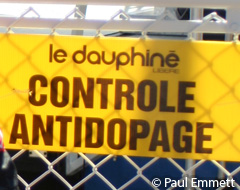 Two months after the first sportsman was suspended for testing positive for human growth hormone, a more powerful test for hGH is moving ever-closer towards its official introduction. On Wednesday British doctors reported that a new method of screening has passed an important trial and, once it is finally approved and introduced, it would enable testers to better detect the hormone’s use.
Two months after the first sportsman was suspended for testing positive for human growth hormone, a more powerful test for hGH is moving ever-closer towards its official introduction. On Wednesday British doctors reported that a new method of screening has passed an important trial and, once it is finally approved and introduced, it would enable testers to better detect the hormone’s use.
The current test can only detect the substance within 24 hours of its injection, but the newer method would have much longer rates of detection. It pushes out the window to at least a fortnight, greatly increasing the risk for those who want to cheat.
According to Reuters, the new method works by detecting the proteins IGF-I and P-III-P in the blood. The test is known as GH 2000 and, as the name hints, it was originally due to be implemented in time for the 2000 Olympic Games in Australia. However concerns about its accuracy when dealing with different age groups and ethnicities led to a delay in its implementation.
The latest trials looked at junior athletes between 12 and 20 years of age, seeking to determine if there was any risk of false positives. This turned out not to be the case.
"Despite the fact that there are differences in hormone levels in young athletes, none of them was falsely accused," said Dr. Richard Holt of the University of Southampton.
"Our hope is that if you have an effective test, that will dissuade athletes from taking growth hormone."
He said that just one more hurdle remains to be overcome, then the test can move forward. He was reluctant to disclose the exact date the new method will be introduced, as anti-doping authorities want to be able to use the element of surprise.
Growth hormone stimulates muscle and bone growth and has long been used by athletes. While recent tests have raised a question about its efficacy when used alone, it is thought to provide a boost to performance and recovery when combined with other anabolic agents such as steroids.
Side effects include liver and thyroid damage, the irreversible swelling of internal organs including the heart, and acromegaly, the growth of the jaw and eyebrows. Hands and feet are also known to increase in size. Diabetes and cancer are other suspected risks.
Even if there is a delay in implementing the new test, it already spells bad news for doping athletes. Under WADA rules, samples can be stored and retested at a later date, thus benefiting from advances in the detection of banned substances such as hGH.